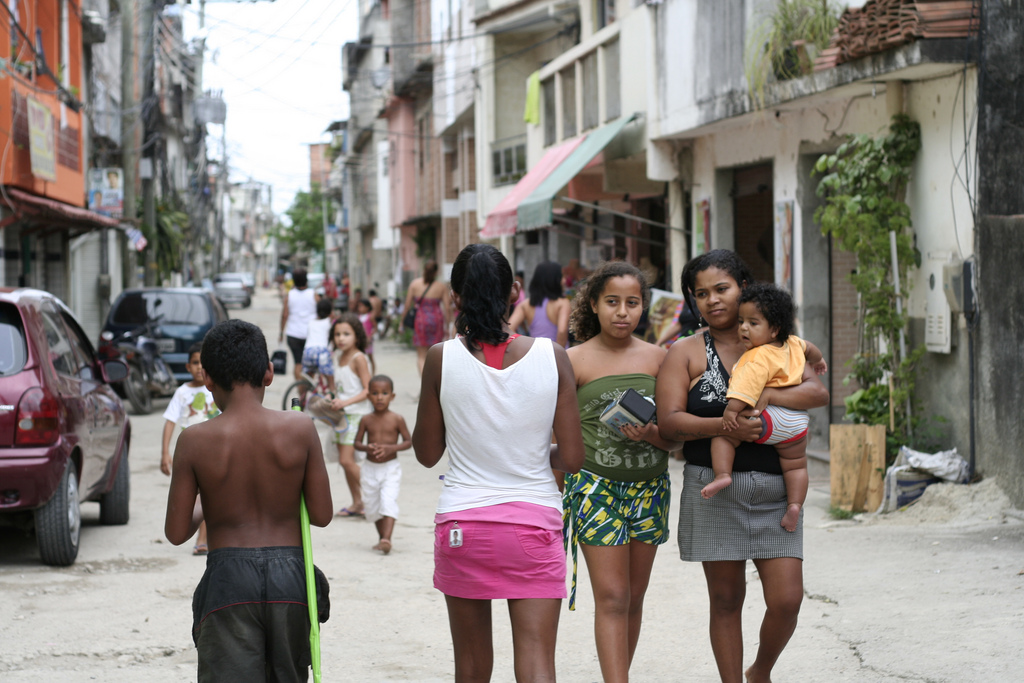 In the dense built environment of favelas, spatial priority is given to housing. Public spaces, then, develop informally out of the leftover places in the urban landscape. Public streets and staircases are adopted as places to meet, discuss and hang out. Additionally, the private realm often extends into the public sphere, resulting in social spaces that include rooftops, terraces and doorways which provide these same functions. These spaces are the residents’ Third Place, ‘great good places’ where everybody knows your name and regulars often meet. It exists beyond the primary place of home and the secondary place of work, offering an alternative set of relationships and interactions within a familiar, companionable setting.
In the dense built environment of favelas, spatial priority is given to housing. Public spaces, then, develop informally out of the leftover places in the urban landscape. Public streets and staircases are adopted as places to meet, discuss and hang out. Additionally, the private realm often extends into the public sphere, resulting in social spaces that include rooftops, terraces and doorways which provide these same functions. These spaces are the residents’ Third Place, ‘great good places’ where everybody knows your name and regulars often meet. It exists beyond the primary place of home and the secondary place of work, offering an alternative set of relationships and interactions within a familiar, companionable setting.
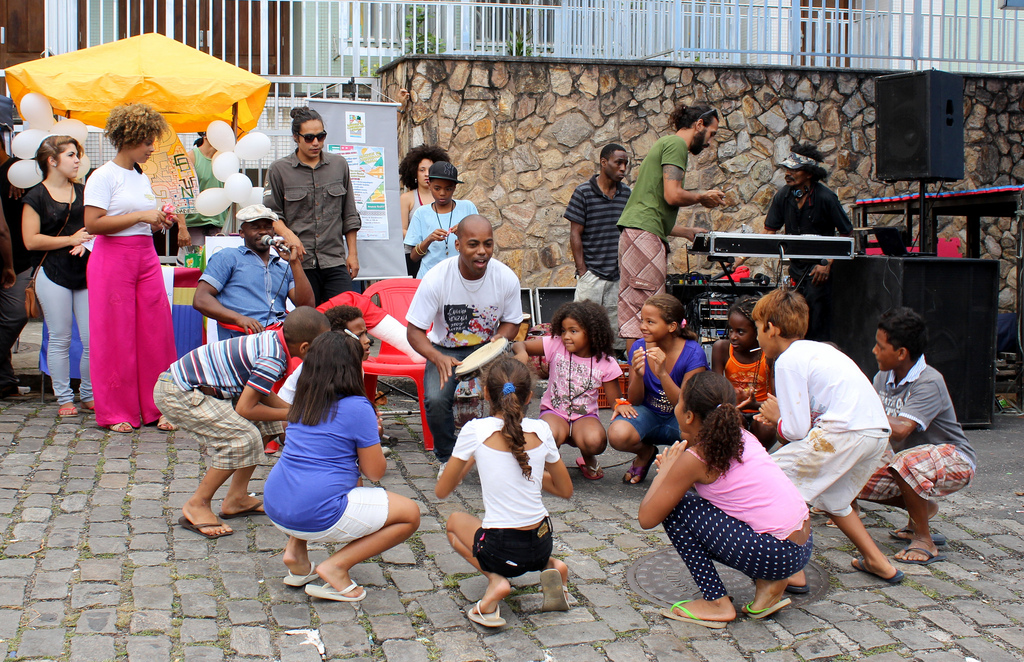 The act of placemaking considers a public space to be the heart of a community. Fueled by a sense of pride, it strengthens the connection between the people and the collective places they share within a neighborhood, demonstrated in the multitude of ways the spaces are utilized, enjoyed and maintained. By extension, community building emerges alongside this movement, increasing the solidarity of the residents and solidifying the value and necessity of the spaces themselves. The social intimacy amongst favela residents and the relationships formed due to physical proximity and circumstance are in some ways unrivaled.
The act of placemaking considers a public space to be the heart of a community. Fueled by a sense of pride, it strengthens the connection between the people and the collective places they share within a neighborhood, demonstrated in the multitude of ways the spaces are utilized, enjoyed and maintained. By extension, community building emerges alongside this movement, increasing the solidarity of the residents and solidifying the value and necessity of the spaces themselves. The social intimacy amongst favela residents and the relationships formed due to physical proximity and circumstance are in some ways unrivaled.
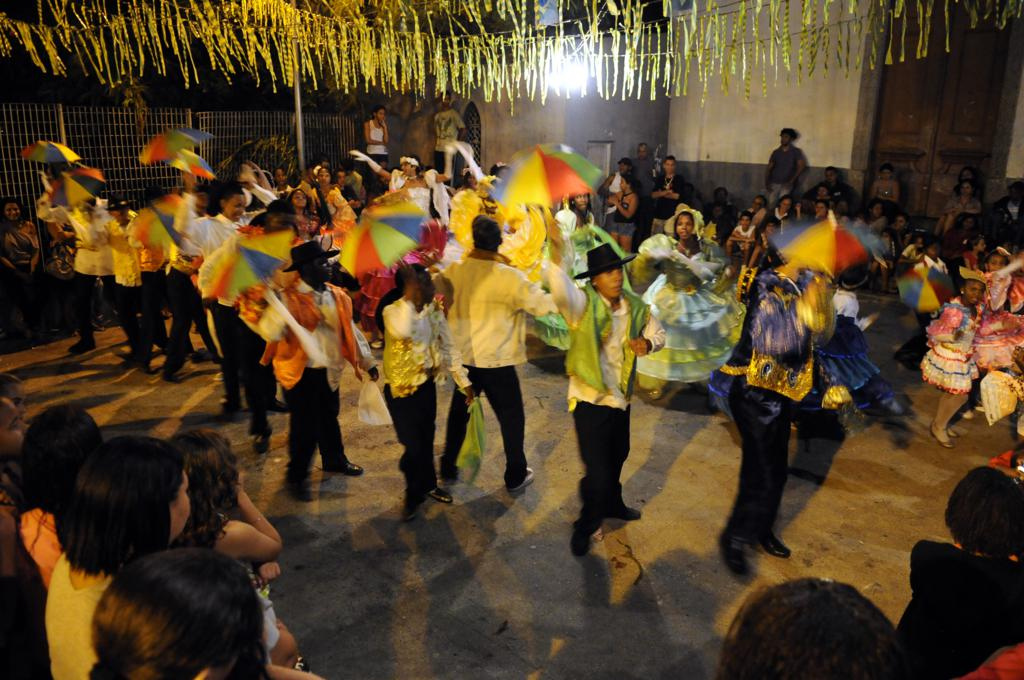 In the favelas I’ve visited, well into the night, adults enjoy food and drinks from the dozens of small bars that line the roads, while children run and play in the streets. The mixed-use development that exists within favela communities, combining residential and local commercial establishments around traditionally pedestrian corridors, further promote these spontaneous gatherings. During the day, teens strike up spontaneous football matches along wider stretches of roadway, while others play games in and out doorways and along staircases. In Complexo do Alemão, some teens were even playing video games around an outdoor television set.
In the favelas I’ve visited, well into the night, adults enjoy food and drinks from the dozens of small bars that line the roads, while children run and play in the streets. The mixed-use development that exists within favela communities, combining residential and local commercial establishments around traditionally pedestrian corridors, further promote these spontaneous gatherings. During the day, teens strike up spontaneous football matches along wider stretches of roadway, while others play games in and out doorways and along staircases. In Complexo do Alemão, some teens were even playing video games around an outdoor television set.
Though making possible the neighborliness that exists within these communities, informal public spaces are limited in other opportunities they can provide. Very few of these areas provide room for athletic, educational or other leisure activities. Furthermore, areas spacious enough for large public gatherings are scarce. When they do exist, their importance may be overridden by the car, often acting instead as parking lots.
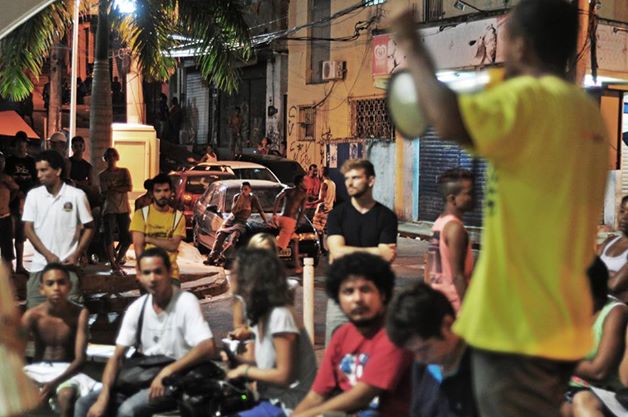 Thus, formally-designated public spaces are also necessary in favelas, as they provide residents with a vast array of benefits associated with the Right to the City concept. Indoor public spaces, such as libraries and community centers, can take on grander civic roles acting beyond their traditional paradigms as centers of information and knowledge. They are spaces in which youth and adults can engage with one another, gain new skills, and nurture diverse hobbies. Outdoor public spaces, particularly recreational facilities, encourage a sense of play, with physical activity having a positive effect on their psychosocial development. Places for public gatherings, such as squares and plazas, provide the ideal space for an outdoor market place, helping local vendors flourish. They also act as a suitable location for mobilizing a community on equal grounds, prompting among other things, an open discourse. Spaces that make possible and stimulate meetings and debates are an invaluable asset within a community.
Thus, formally-designated public spaces are also necessary in favelas, as they provide residents with a vast array of benefits associated with the Right to the City concept. Indoor public spaces, such as libraries and community centers, can take on grander civic roles acting beyond their traditional paradigms as centers of information and knowledge. They are spaces in which youth and adults can engage with one another, gain new skills, and nurture diverse hobbies. Outdoor public spaces, particularly recreational facilities, encourage a sense of play, with physical activity having a positive effect on their psychosocial development. Places for public gatherings, such as squares and plazas, provide the ideal space for an outdoor market place, helping local vendors flourish. They also act as a suitable location for mobilizing a community on equal grounds, prompting among other things, an open discourse. Spaces that make possible and stimulate meetings and debates are an invaluable asset within a community.
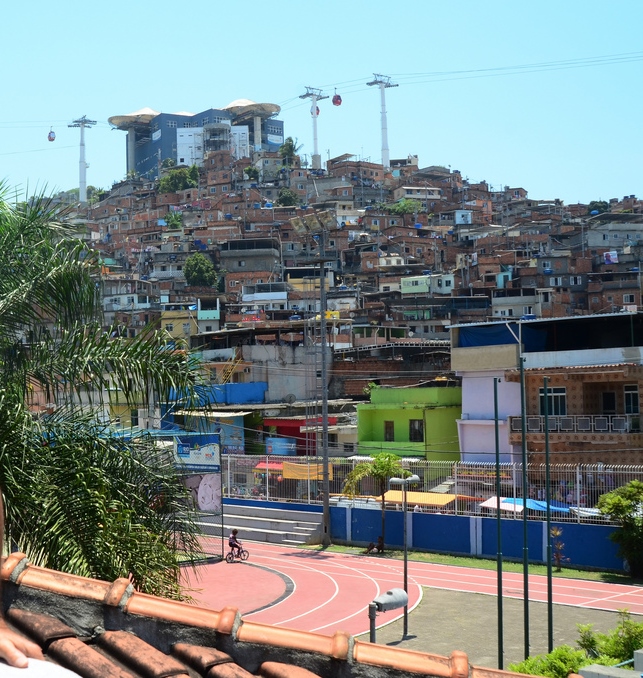 Many of the early formal public spaces in favelas came through the work of neighborhood associations before the 1990s. Formed in the late 1970s, they demanded civil rights and raised political awareness in their communities. They helped summon public resources and contributed to the creation of formal public spaces. In Maré, neighborhood associations were responsible for the creation of a public square within the dense built landscape. In the past couple of decades, formal public spaces were mostly associated with the Favela-Bairro City government upgrading programs of the 1990s.
Many of the early formal public spaces in favelas came through the work of neighborhood associations before the 1990s. Formed in the late 1970s, they demanded civil rights and raised political awareness in their communities. They helped summon public resources and contributed to the creation of formal public spaces. In Maré, neighborhood associations were responsible for the creation of a public square within the dense built landscape. In the past couple of decades, formal public spaces were mostly associated with the Favela-Bairro City government upgrading programs of the 1990s.
Though limited in number and frequency across communities, a range of formal public spaces have thus been built in favelas over decades, ranging from football pitches, recreational areas, and community centers, to libraries and public squares, as well as the widening and paving of roads. Yet, how these spaces are used, by whom, and how they are maintained requires closer inspection. What is originally outlined on paper is often very different from what is achieved in practice, with public spaces at times suffering set-backs in quality and effectiveness due to a lack of public consultation. Though many government programs insist on public participation in order to understand what residents truly want and need from such spaces, what is ultimately built is predominantly top-down. This results in poor quality formal public spaces in favelas, and higher quality informal public spaces as measured by the tried and true Power of Ten concept–“any great place itself needs to offer at least 10 things to do or 10 reasons to be there.”
Thus, in Rio’s favelas, recognizing and preserving the qualities residents perceive in informal public spaces, while developing more effective and responsive formal public spaces, is the way forward. While spontaneous gatherings within informal spaces contribute to the vibrancy of a neighborhood, the multiple ways in which formal public spaces can be used are beneficial to the growth and strength of the community itself and are an important aspect of community development that warrants attention and investment.
